AudioCulture
The noisy library of New Zealand music
Te pātaka korihi o ngā puoro o Aotearoa
Dale Wrightson
Know him or not, he was in your face as an advertising creative, hawking recordings on TV from 20 Solid Gold Hits and Pianos By Candlelight to the pre-match warm-up music of Jonah Lomu. As an ad man, he was also selling us bigger blocks of cheese and cute cartons of flavoured milk he named “Zap”.
When Generation X complain about the excesses of the 1980s and the long lunches championed by advertising agencies and record company accomplices, they are speaking of Dale Wrightson’s generation, who had to shake up New Zealand’s staid business world.
Wrightson and company chose uptight Wellington to get the party started. The young, creative “hot shots” – an advertising industry term – they were hardworking and hard-partying, with a passion for success.
One of the fuddy-duddy habits they had to challenge was the workday finishing at 5pm. Recording studios like EMI, whose staff wanted to go home at 5pm, were out. New recording studios like Marmalade in Wellington and Mandrill in Auckland were born.
School boy OE
As young children the Wrightsons’ father taught them to play the ukulele and then guitar. They started young and were primed to become performing teens.
Their father’s Navy job took the family to England from February 1959 to 1962 to oversee the building of two New Zealand frigates. Dale was 14 when they arrived and his younger brother, Craig Walsh-Wrightson, was 11. They attended a very traditional English boys’ school.
“The brothers Wrightson were never bullied at school,” says Craig, “we colonial boys thrashed the Brits at just about every sport going and overwhelmed them with talent and charisma. Of course it helped that Dale by age 17 looked like Cliff Richard and played the Fender Strat like Hank Marvin.”
In England Dale played in the group the Electrons with Nicky Graham who after working with Toni Visconti and playing piano on David Bowie's 1972 Spiders From Mars tour, went on to work in CBS A&R, producing big-sellers for The Nolans and Bros.
The teens soaked up varied UK and USA music and comedy influences via television and Radio Luxembourg. They spent hours perfecting their own arrangements of songs. Returning to New Zealand, Craig found a niche playing acoustic jazz/ folk/ Latin/ pop vocal and guitar while attending Victoria University in Wellington and Dale played lead electric guitar in The Corvairs.
Chez Paree
Craig’s regular gig was the Chez Paree coffee house in the Embassy building, on Marjoribanks Street – working three nights a week, two hours on Tuesday and Thursday and four hours solid on Saturday. Dale would join Craig at “The Chez” regularly between 1965 and 1972 on second guitar and back-up vocals. They played unamplified nylon string acoustic guitars with no vocal microphones for the first two years. They brought their guitars back from the UK – Craig’s was a Framus and Dale’s was a Swedish 1962 Hagstrom.
“We were the headline act at the Chez,” said Craig, “because we were not solely folk singers. I did an early stint at the Monde Marie across the road but it was a tribal crowd addicted to depressing songs from the American Dustbowl years. I called it Woody Guthrie on Quaaludes.”
“At the Chez we played what we liked and we liked variety: Joan Baez, The Beatles, Peter Paul & Mary, Jose Feliciano, Rolling Stones, The Hollies, Beach Boys, Bob Dylan, Laurindo Almeida, Antonio Carlos Jobim, Big Bill Broonzy, BB King, Elvis Presley, Roy Orbison, Johnny Cash, Peggy Lee, Frank Sinatra, Johnny Mathis, etc. The crowd loved it and we negotiated a special gig rate from the proprietors to reflect our standing-room-only appeal. We were businesslike lads even then.”
What was the special gig rate? Craig clarified: “The ‘headliners’ pay rate I negotiated at the Chez in 1970 was pre-tax five dollars per hour each, so for six hours total evening performances per week we earned thirty dollars. You compare that with my graduate starting salary as an NZBC producer, that same year, fifty-one dollars for a forty hour week or one dollar thirty per hour. We were early-twenties guys, each with a wife and two kids to support, so you can see why we saw a future for us in music, whether it be our after-hours income from our cabaret work or our freelance ‘jingle’ writing and production.”
“Dale returned from UK with his school days 1961 Flamenco Red Fender Stratocaster,” recalled Craig, “and a ‘Watkins CopyCat’ portable tape echo machine which he used to terrific Shadows-style effect in The Corvairs, but also (being a Wrightson) he rented it out to other bands like The Diplomats.”
The Corvairs regularly played Hill Street Teenarama, Lower Hutt Centennial Hall, The Caltex Lounge and the Downtown Club. Craig recalls one memorable summer gig when he joined Dale in The Corvairs: “I filled in on rhythm guitar and backing vocals at the Marathon Twist Contest at Raumati South Community Hall. We slept in the back of the hall and played 10am to noon, 2pm to 4pm, then 8pm to midnight every day until the last of the round-the-clock-twisters expired, conveniently on New Year’s Day.”
In the early 70s the brothers were finalists twice on the Studio One TV talent quest.
In the early 70s the brothers were finalists twice on the Studio One TV talent quest. They featured on the commercial LP release 20 Studio One Hits (1972) performing ‘Thinking Of You’ as January. The song was Craig’s rewrite of a Griffins TV advert soundtrack, released as a single. “It made not a ripple sales-wise,” said Craig. “I recall The Corvairs releasing ‘Saturday Night at the Duckpond’ – a coruscating Dale-on-electric-guitar version of ‘Swan Lake’. The B-side was Edvard Grieg’s classic ‘Hall Of The Mountain King’. We were eclectic.”
The brothers also performed as a cabaret duo – “Craig & Dale” – at the Beefeater Arms, White Heron Lodge and various private functions. After gaining a BA Craig worked at the NZBC and was then headhunted to join the Charles Haines ad agency as a writer and TV producer.
“We started moonlighting for other agencies as jingle producers,” said Craig. “Soon we worked three to four nights a week in a studio creating music tracks and radio campaigns, and our music income exceeded our already generous ad agency incomes.”
Phonogram
John McCready was marketing manager at Phonogram Records in 1969 when he first worked with the 25-year-old Dale Wrightson. As a division of Philips, McCready was obliged to use their advertising agency, J. Inglis Wright, but he did not think their account executives understood how to market music. Trying to find a solution, the agency assigned Dale Wrightson, the new kid (or the “young gun” in agency speak) to the Phonogram account. A young musician himself, Dale “got it” from day one. “Dale worked directly with me on creative,” says McCready. “We were totally in sync.”
McCready soon realised he could give Wrightson almost any creative problem that needed a solution – from record cover design to record production. When Dale left J. Inglis Wright in 1971 to set up January Productions, McCready continued to involve Dale on projects.
January Productions & Marmalade
In 1971, Dale and brother Craig, over terakihi & chips at the Mecca cafe on Mercer Street, shook hands on a partnership to be known as January Productions and the next day they resigned from their day jobs. This novel concept was Australasia’s first-ever multimedia creative consultancy. They initially specialised in music soundtrack, jingle production and radio advertising campaigns, but moved into delivering total campaigns: TV, radio, print, direct marketing, etc.
In 1972, January Productions created a TV advert for Atlantic Oil starring Dudley Moore. Craig: “We wrote and produced the entire multimedia campaign including all liaison and contracts with Dud’s UK management. We got our money’s worth out of Dud. He played the Rolls Royce chauffeur, the rich bastard in the back seat and the petrol pump attendant. He excelled at all three characters. He was an extraordinary talent, a comic maniac always ‘on’, constantly cracking up the crew, who were in tears as they tried to set up shots. An absolute gentleman and a mad genius.”
A third figure loomed large in the brothers’ peak music production era: arranger Dave Fraser. “Dale and I composed and played by ear,” said Craig. “We needed an arranger to write our strings and other orchestral parts. Dave could translate our ideas into sheet music for our guest musicians. Dave could also play any keyboard or drum style. We would block-book entire days at EMI recording or Rocky Douche’s Marmalade studios and produce three or four different soundtracks in a day and have a ball doing it.”
Dale and Craig helped Rocky Douche develop Marmalade’s first 8-track studio in Ghuznee Street.
Dale and Craig helped Rocky Douche develop Marmalade’s first 8-track studio in Ghuznee Street. “They were clients, shareholders and directors,” says Douche. “They were involved in choosing the name ‘Marmalade’ and also involved designer Peter Burt in the creation of our cat logo.”
“January Productions did a lot of work for Colenso but not for that agency exclusively,” said Douche. “We were the advertising industry commercial studio of choice in Wellington, so naturally when they formed Campaign, the Colenso work stopped, but their Campaign work replaced it.”
Shona Laing - 1905
When John McCready signed the 15-year-old Shona Laing in 1972, he was aware of her talent as a singer and as a songwriter. He got on well with the idealistic songwriter but he knew, “I was a ‘suit’ and that I needed to put her together with a producer she could musically respect,” said McCready. “Dale, with his incredible musical ability and commercial advertising success was the right person to give me the hit records I wanted.”
Dale produced the album Whispering Afraid, working with his regular arranger Dave Fraser. Dale also played guitar, bass and synth and supervised the cover design. The album and the three singles were hits: ‘1905’, ‘Show Your Love’ and ‘Masquerade’. Dale’s prized 1970s sunburst finish Fender Precision Bass got to play on a recording session beyond the perimeters of jingle-land.
20 Solid Gold Hits
When John McCready was Marketing Manager at Phonogram, his boss Willie Morton would not allow TV advertising as he considered the idea, too risky. It worked in the USA and Australia for TV marketers K-Tel who had opened a New Zealand office. When McCready became General Manager in 1970 he wanted to be the first record company to go to TV with a current hits compilation. He sought creative help from Dale’s new company, January Productions.
“It was originally going to be named 20 Gold Hits,” says McCready. “But at a meeting with Dale and our marketing manager, Brian Pitts, I said I didn’t like the title, finding it ‘not solid enough’. ‘Then why don’t we call it 20 Solid Gold Hits,’ said Dale. And so it was.”
“The 1972 album sold over 90,000 copies and the 20 Solid Gold Hits series continued for years, turning what was the smallest division at Philips into its most profitable,” says McCready.
Dale Wrightson supervised the sleeve designs and created the TV adverts. “Dale was the only person I knew that could, in a thirty second ad, capture the essence of a twenty-song album. Dale had an instinctive grasp on what song hooks to use, for how long and in what order. Genius really.”
The success of the 20 Solid Gold Hits series changed the way pop records were sold in New Zealand.
Craig Walsh-Wrightson: “We made sure that wherever possible we included at least one local artist track on each album, with the enthusiastic agreement of industry clients like Stuart Rubin, John McCready and Brian Pitts. That meant local artists were receiving royalty cheques equal to those of the overseas big names featured on the album.”
The success of the 20 Solid Gold Hits series changed the way pop records were sold in New Zealand. Over the following 30 years, Dale worked with a succession of sales and ego-driven record company bosses who were trying to outdo the sales figures of their predecessor.
Country & Town
Dale and McCready soon knew they were good at the game. “Sometimes our enthusiasm for what we were doing got in the way of common sense and ‘rules’, recalls McCready. “Our TV marketing rivals K-Tel were also being quite creative, coming up with good concepts and selling lots of albums. One day K-Tel hit the market with a compilation LP called 20 Town & Country Hits, which was well received. Bugger them I thought, we have better songs in our catalogue, so let’s release our own version.”
A week later McCready had 20 Country & Town Hits in the stores with a sleeve and a TV advert by Dale Wrightson. The Phonogram album was the bigger seller and K-Tel took out a court injunction to stop the selling of the rival album based on “confusion in the market place” and “passing off” laws.
McCready recalls facing the music: “Waiting in the court lobby for our case to be called, our lawyer casually said to Dale, ‘On what basis did you design the album cover? To me it does look a lot like theirs.’ Dale said, ‘Well John said to get as close to their one as we could, so I did.’ Oops! Off our lawyer went to find K-Tel’s lawyer and after a quick conversation a settlement was agreed. Lesson learned.”
When John McCready left New Zealand in 1973 to work in the UK, Dale continued to work with Phonogram Records and built a strong bond with the company’s new marketing manager, Stuart Rubin.
1974 campaign starts
They may have met Dudley Moore, but the business model at January Productions was flawed. “The ad agency clients took the credit and the media commission, so in 1974 we relaunched as a full ad agency,” says Craig Walsh-Wrightson.
“January Productions merged with client agency PCW – Tony Preston, Terry Christie and Warwick Woodward – for whom we had been acting as freelance creative department, to create Campaign Advertising Group. Warwick was a silent partner, his fully accredited Woodward Advertising had placed PCW’s and later Campaign’s media until we got full accreditation.”
The agency started with four key clients: NZ Dairy Board, NZ Breweries, Todd Motors Limited and Phonogram.
The agency started with four key clients: NZ Dairy Board, NZ Breweries, Todd Motors Limited and Phonogram.
Although Dale’s father was in the Navy, when the UK joined the EEC and left the Dairy Board with a cheddar cheese mountain, Dale and the team from Campaign rescued our country from meltdown. One could argue that selling cheese was Campaign’s biggest achievement.
The big cheese of Campaign, Terry Christie: “The Dairy Board, via Catherine Saunders, asked us if we could increase local market cheese consumption. I looked at a piece of market research they provided and found that people went to the supermarket once a week and bought 250g of cheese. Then they ate the cheese in a couple of days but didn’t replace it until they went to the supermarket five days later. So for five days most New Zealand fridges didn’t have any cheese.”
Dale did commercials featuring Des Britten and Dale’s son Daniel and the Auckland trial increased cheese consumption by 40%. This was also the start of a long career in voice work for Daniel. The Dairy Board agreed to extend the “Bigger Block” campaign nationwide and increase the media spend. Celebs were brought in to save the nation – Bruce Forsythe and Selwyn Toogood. “We launched ‘The Great NZ 1kg of cheese’ and it worked,” recalled Terry Christie, “and in two years, New Zealand’s cheese consumption had doubled and Campaign was on its way into the big time.”
Despite their association with cheese in the 1970s and the art of jingle writing, the Wrightson brothers were in no way involved in the famous 1960s Ches ‘N’ Dale adverts for Chesdale cheese. That advert was written by Terry Gray and sung by The Yeoman. The ditty just caused them to have to endure a lot of ribbing.
In 1977 Dale Wrightson and his family – wife Gillian, son Daniel (seven) and daughter Katie (four) – moved to Auckland to open a Campaign agency office. Joining Dale in the first Parnell office were new agency partner Phil Fiebig (ex-Colenso) and later, Dale’s lifelong creative collaborator, art director Peter Burt.
CBS arrives, January 1978
In 1978 when John McCready opened CBS Records’ first New Zealand office in Parnell, Auckland, he had to find an ad agency. Dale Wrightson’s Campaign Agency was also in Parnell. They took on the CBS account and the Phonogram Records account moved to the MDA agency.
One of McCready’s first problems in 1978 was getting Meatloaf’s Bat Out Of Hell album on the radio. The Radio Hauraki programmer told McCready, “If this is the type of rubbish CBS are going to release the company is doomed here.” New Zealand radio said a firm “No” to Meatloaf.
“I commissioned Dale to make us a sixty second advert to play on those same radio stations,” says McCready. “Dale produced an absolute beaut – the advert featured an old woman talking to a bikie saying how much she liked the Bat Out Of Hell music, which was playing in the background.” The advert worked. Sales took off and radio airplay followed. After big budget TV campaigns with Wrightson doing the creative work, the album is now certified 17x Platinum in New Zealand, with 255,000 units sold.
In 1979 it was a similar problem. NZ radio had an unwritten rule – we don’t play black music. As with Meatloaf, the very influential Radio Hauraki said no to playing Michael Jackson’s ‘Don’t Stop ’Til You Get Enough’ from his Quincy Jones-produced Off The Wall album. “Again we purchased airtime,” said McCready. “Dale produced a great advert and the album went to No.1.” TV adverts followed and Off The Wall is now certified 6x Platinum in New Zealand, with 90,000 units sold.
To gain market share, John McCready wanted to develop some saleable local recording artists. Dale was called on to direct photo shoots and design marketable covers for CBS musicians, working in partnership with Campaign Agency art director Peter Burt. Dale had to talk the modest Sharon O’Neill into the nearly topless single sleeve shoot for her ‘Don’t Let Love Go’ duet with Jon Stevens. Dale also produced Sharon O’Neill’s 1979 Telethon song, ‘Don't Say No To Tomorrow’.
As the Campaign Agency grew in size it found large new premises, only 50 metres away from the CBS Records offices, in Falcon Street. “For an agency like Campaign, record company campaigns in terms of dollars spent, were not big,” said McCready. “It would be Dale’s love of music which gave us at CBS a bit more attention than we probably deserved.”
“We lived in each others’ offices,” says McCready’s sales manager and successor, Murray Thom. While Thom was a world champion yachtsman, Dale was more familiar with the pleasures of yachting. “We were friends, so the conversation never stopped.”
1984 - no more cheese
In the year he turned 40, Dale left Campaign, 10 years after he co-founded the very successful upstart agency. He left one year before the March 1985 sale to one of the world’s leading ad agencies, Saatchi & Saatchi. After the sale, his brother Craig stayed on as the Exec. Creative Director of the Wellington office but he also resigned, six months into his four year contract, in his own words, “before corporate-land claustrophobia set in.”
After Saatchi & Saatchi, Craig Walsh-Wrightson travelled, freelanced, operated boutique agency Hold That Tiger and fell into screen acting as a sideline hobby. He then moved to Auckland to focus on screen acting with roles in Xena: Warrior Princess, Spartacus, Outrageous Fortune and voice work.
The former Wellington-based chairman of Campaign, Terry Christie, reflected in 2016 on Dale’s departure from Campaign. “The corporate scene wasn’t Dale’s cup of tea. He was the heart of the Auckland office, but didn’t want to run it. We tried a couple of managing directors who we hoped would protect him from the internal politics but neither of them was successful. It was no surprise that Dale decided to move on. We were all disappointed but those of us who knew him well weren’t that surprised. His strength was finding quick answers to advertising or marketing problems, free of any politics or compromises.”
Murray Thom - records to sell
Dale Wrightson tried retirement but Murray Thom was soon on the phone to him. “What do you mean you’ve retired? We’ve got records to sell.” Thom, the young salesman who in 1981 at the age of 23 found himself running CBS New Zealand, had Bruce Springsteen and Michael Jackson albums to sell and he wanted Dale Wrightson back on board.
Whether “not another Bruce Springsteen campaign” ever crossed the mind of Dale Wrightson we don’t know, but some TV viewers must have wondered, “will these Born In The USA advertisements ever stop?” They stopped when the album was certified 16x Platinum in New Zealand, with 240,000 units sold.
Another Murray Thom and Dale Wrightson marketing collaboration was the mega-selling 1982 Michael Jackson album Thriller. Michael Glading, who followed Thom at CBS Records, said Thriller, like Born In The USA, exceeded 200,000 sales in New Zealand.
When Murray Thom left CBS Records he continued to work with Dale’s boutique advertising agency, Calypso. In fact he scored a desk in their Parnell Road office. Dale worked on Thom’s new recording projects.
“When I signed Carl Doy in 1987,” said Thom, “Dale came up with the name Piano By Candlelight, borrowed from Richard Clayderman’s Music By Candelight. While we shared an office together we did the Footrot Flats merchandising and a radio series with Billy T. James, Te News which was syndicated to twenty to thirty commercial radio stations.”
When Thom gained the personalised licence plates franchise, Dale did the early print adverts and Daniel recalls having to recruit the talent for an early TV advert, largely using friends as the only model fee for being in the advert was your own personalised number plate.
Fender bender
On Dale’s 40th birthday, 2 April 1984, Dale was given a Black Fender Stratocaster as a birthday gift “from several admirers” says Craig, “including our old compadre Roger MacDonnell (of Colenso fame), who plays casual guitar but has a collection of Fenders any muso would kill for.”
For the big birthday Dale and friends partied at home with wife Gillian as chef of choice. Their Parnell townhouse was close to the many Parnell locations that Campaign, Calypso or Juice TV occupied. For a decade or two, Dale and friends were usually found Friday afternoons at Portofino Restaurant, next to the Windsor Castle Tavern, halfway between where Juice TV would be and home. "We should have had a shareholding in Portofino," noted Daniel Wrightson. "We referred to it as the other office or the clubhouse."
NZ Music Awards
In 1986, Tony Chance of RIANZ asked Dale Wrightson to work with Graeme Nesbitt to produce the NZ Music Awards. The annual industry dinner with prizes had not been on television in recent years. Dale succeeded in getting the NZ Music Awards back on televison and the Wrightsons continued to produce the NZ Music Awards up to 1993. The 1992 and 1993 shows were Pepsi sponsored and broadcast on TV2 – from the Aotea Centre in 1992 and from the Powerstation the following year. The Wrightsons returned to do one more NZ Music Awards show, the 2000 show hosted by Marcus Lush at the Civic Theatre and broadcast on Sky 1 and Juice TV.
Music television 1989 to 1993
1989 saw old friends Dale Wrightson working on the TV3 launch and John McCready at TVNZ working on derailing TV3’s attempt to take the viewing audience away from TV One and TV2. They were foes by day and friends at night.
In the 1990s, Dale Wrightson’s business morphed from boutique ad agency into music television. Days after Dale’s death, his wife Gillian Wrightson reflected on the dynamics of a family business. “The kids had ideas. Dale, as always, made it happen. Of course working as a family had its pitfalls. Fairly explosive at times. We were joined in our offices by many talented people. We had the best of fun. Dale driving it all.”
The first music show produced by the Wrightsons was the chart show Shakedown for TV3 with Daniel as host.
The first music show produced by the Wrightsons was the chart show Shakedown for TV3 with Daniel as host. It screened from 29 November 1989 (TV3’s first day on air and their second show) until early 1991. “Dale arranged the sponsorship by Coca-Cola,” noted Daniel. “In 1990 we also produced a 24-hour music event for TV3 called Rock ‘n’ Coke ’90 featuring concerts and live broadcasts from Princes Wharf.”
John McCready at TVNZ asked Dale Wrightson to get Pepsi RTR Countdown and NZ’s Funniest Home Videos back on track. Dale and Katie took on the work, joined by Daniel in May 1991, who had spent several years in radio learning about programming and broadcast technology.
The Wrightsons cost effectively produced the music video shows in a small production house suite. While doing a radio shifts on 89FM in the pre-computer era, Daniel Wrightson was prompted to ask the question: if one person can use carts to deliver the music and advertising on a radio station, why can’t one person use Beta carts to do the same with a music TV station? This idea evolved into the two person format of producer and presenter, allowing Max TV to be cost effective.
1993 to 1995 Max TV
When the Wrightsons moved into music television production, Dale was uniquely able to leverage his credibility in the ad agency world to gain the necessary advertising sales or sponsorship support to finance the ventures. While most entrepreneurs would get six months of the “wait and see” attitude from advertisers, Dale could get commitments before broadcasting commenced.
Nikki Tysell (now Streater) recalls wearing a suit to her Max TV ad sales job interview. “Dale was in shorts and flip flops and took the piss out of my suit. I thought I’d blown it.” But Nikki got the job of assisting Dale with advertising sales. “I remember those early days very fondly – it was just Dale and I selling the ads – none of us had ever worked in music TV so we all learnt together,” Nikki told AudioCulture in 2016. “Dale was a brilliant mentor – brave, funny, charming, challenging and generous with his time and knowledge.”
As the Max TV programmer, Daniel Wrightson assembled a line-up of show hosts, many of whom went on to fame.
As the Max TV programmer, Daniel Wrightson assembled a line-up of show hosts, many of whom went on to fame in local mainstream media or abroad. Max TV went to air 28 October 1993 at 4pm. Names Daniel recruited for Max TV include Zane Lowe, Nick Dwyer, Toni Marsh and the stars of Box Dog: Nathan Rarere, Steve Saussey, Peter Vegas (Robbo) and Luke Nola. Youngest of the crew was the 14-year-old Nick Dwyer.
“Max TV was all well and good for the first two years,” says Daniel. “At the end of the first two years, Dale had negotiated with Peter Francis from Force Corporation to buy out the other shareholders. We were doing the programming and selling it. It was Dale’s and my baby. All the revenue had been generated by our work and our advertising sales. We provided all the advertising income to pay all the people. The other partners only provided the facilities and the licence. I think we were doing two million in turnover. We decided this was our passion and where we were going in life. We made an offer of $2,100,000 and they accepted it in a tacit way, on the Friday of Labour Weekend 1995. On the Monday they reneged and said, ‘Actually we’re going to run it and we don’t need you anymore.’ ”
In the NZ Herald (11 November 1995) director Kevin Black commented on the Wrightsons’ departure: “A takeover bid had brought a lot of things to a head. A large corporation thought Max might be nice to own, and it was voted down. The Wrightson interests said let’s do it, the majority said no, the price wasn’t right.”
In a statement, Daniel Wrightson told NZ Herald that their company, Great Pacific Entertainment, had “ceased to be involved in the day-to-day running, programming and selling of Max.”
The Wrightsons encouraged the staff to stick with Max TV. Daniel Wrightson recalled: “I said to people like Zane Lowe, you’ve got gigs here, don’t worry about us, get back in there and carry on with your work.” Nikki Tysell stayed on and continued to sell Max TV advertising.
After their departure from Max TV, Dale legally extricated the family from their shareholding in the enterprise, fearing future financial liabilities. When Max TV closed, two years later, on 3 December 1997, it was the local music scene that had the dour face. NZ On Air’s Brendan Smyth summed it up: “I think it it’s a giant loss for NZ music. Max TV was a big user of NZ On Air funded videos … so a good 50% of our opportunities for screenings has gone.” (NZ Herald, 4 December 1997)
The Juice on Orange
While the Wrightsons were working on Max TV, John McCready, who was now at Sky TV, asked them to create an overnight music video feed for his fresh new channel “Orange”, so the aptly named “Juice” was created. The broadcast tapes were compiled at Max TV, while the Auckland-only station was off air overnight. Juice TV was broadcast in seven regions throughout the country via Sky TV owned UHF frequencies.
At the end of 1995, Juice TV moved to the historic Heards building on Parnell Road. The family team was (loosely) Daniel Wrightson programming, Katie Wrightson managing operations and Gillian on finances.
In 1998 Sky TV went digital and Juice TV launched as New Zealand’s first nationwide 24-hour music TV channel.
In 1998 Sky TV went digital and Juice TV launched as New Zealand’s first nationwide 24-hour music TV channel. The hitch was that the Sky digital signal was initially only in 20,000 homes. To fund 24-hour broadcasting, Dale had to sell exclusivity in key categories such as music sales, video gaming, alcohol etc. With just one lunch, Michael Glading of Sony Music signed on as an exclusive record company advertiser. After lunch, Sony PlayStation got the news and they signed on for exclusivity in their category. Coca-Cola would soon join the roster.
1999-2000 - BMG and Jonah Lomu
When Stuart Rubin returned to New Zealand to run BMG, he was automatically in contact with his lifelong friend Dale and “we’ve got records to sell” may have been part of the conversation. They had worked together 1975 to 1977 when Rubin was at Phonogram and on later occasions.
BMG were short on international hits at the time but Dale and Rubin were both fans of the 1999 Santana album Supernatural. After TV campaigns they achieved 4x Platinum status in New Zealand – 60,000 units sold. BMG needed ideas to achieve turnover and success was achieved with three deep catalogue campaigns: The Best Of Harry Belafonte, Jonah: The Music That Moves The Man and The Boat Album.
The latter title is a pure Dale Wrightson concept, as the love of his life – that floated – was his yacht Cajun Moon. When I first saw The Boat Album in the BMG office, I thought it was an in-joke. Dale saw the humour in the compile and his TV advert concluded with: “Sold wherever good boat albums are sold.” Ironically, a decade later “yacht rock” is a tongue-in-cheek genre description.
Rubin says of their business style: “Formal meetings were not necessary. We lunched and we drank.” John McCready found that drinking with Dale could have repercussions. On a Friday night, Dale and friends agreed that Auckland needed a video store with quality art movies.
“Late on Monday afternoon I’m busy at Radio Hauraki, when Dale phones me,” McCready recalls. ‘I’ve got it’, says Dale. ‘Got what?’ I ask. ‘The premises for our new video shop in Parnell’, replied Dale. The other guys, for genuine conflict of interest reasons, pulled out of the venture but Dale and I proceeded. In no time at all Dale has signed a lease, registered a company and designed a logo. We held the business for several years and our children received a film education and made good pocket money working shifts. We only sold our little hobby when a developer wanted our shop’s lease to redevelop the site.”
J2 and the Windsor Castle Tavern
Dale was very involved in the creation of the J2 channel in 2003 but after that he and Gillian were less actively involved in the business and took time for recreation and travel. In 2009 the family took over the lease of Parnell’s once legendary music venue The Windsor Castle and restored its “tavern” heritage.
On 15 May 2015, Juice TV rebranded as an extreme sports channel called “Garage”. The Juice TV name continues as a half-hour daily show of local music videos and interviews.
When Dale’s health started to deteriorate, he was initially diagnosed incorrectly as having dementia, but he had a neurological condition known as “progressive supranuclear palsy” that limited his mobility and speech during the last three years of his life.
Dale was born 2 April 1944 and died 26 January 2016. He was actively doing something on nearly every day in-between, so only some of the hats he wore are remembered here.
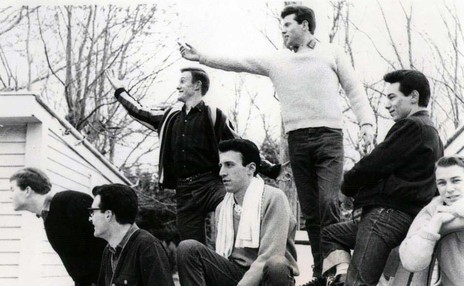
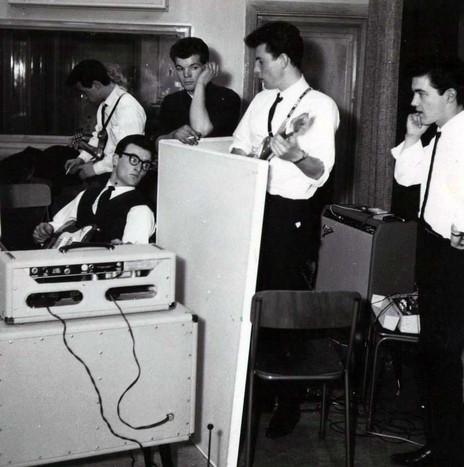
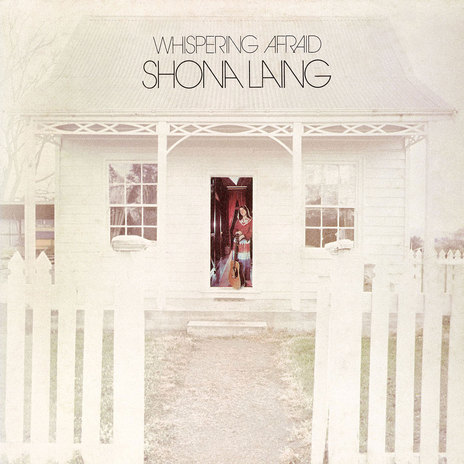
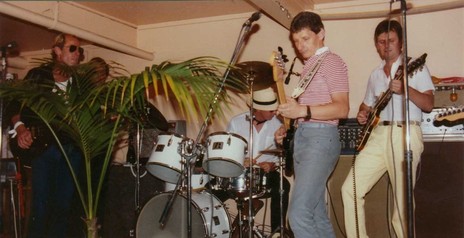
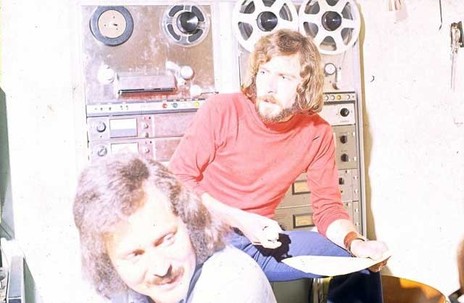
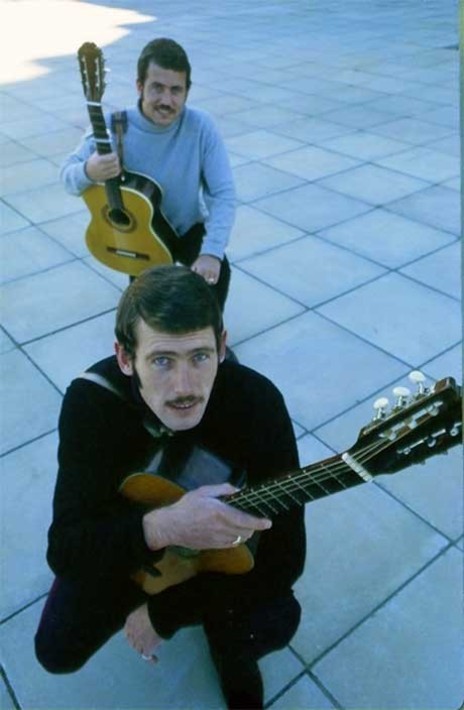
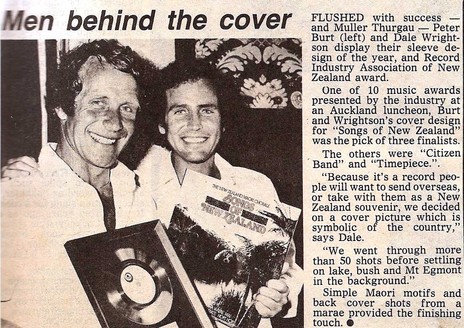
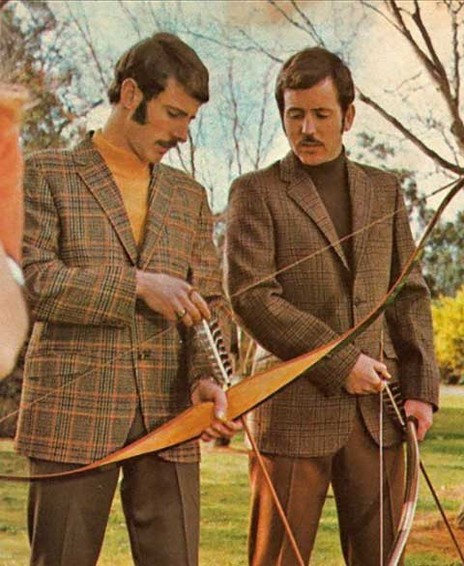
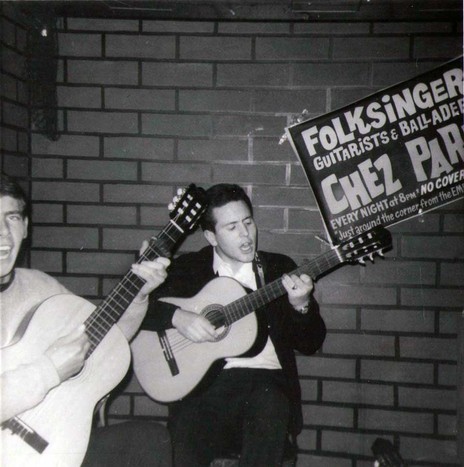

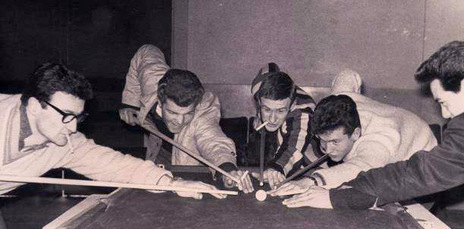
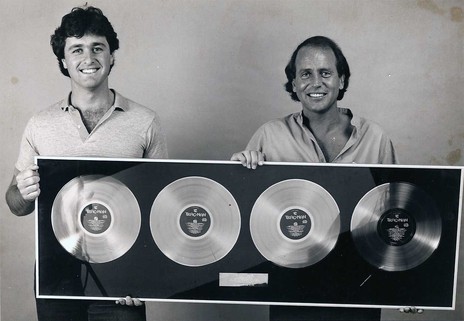
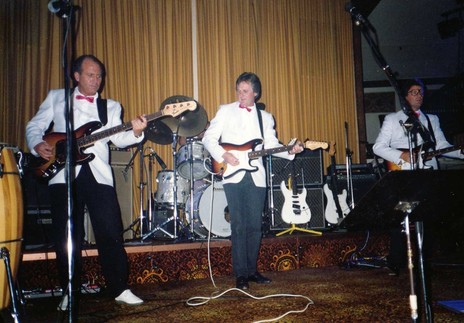
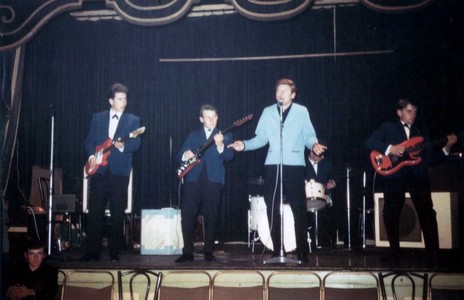
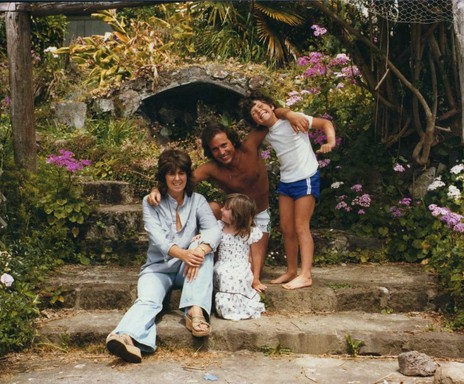
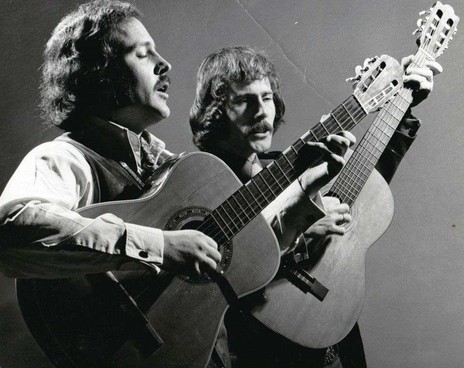
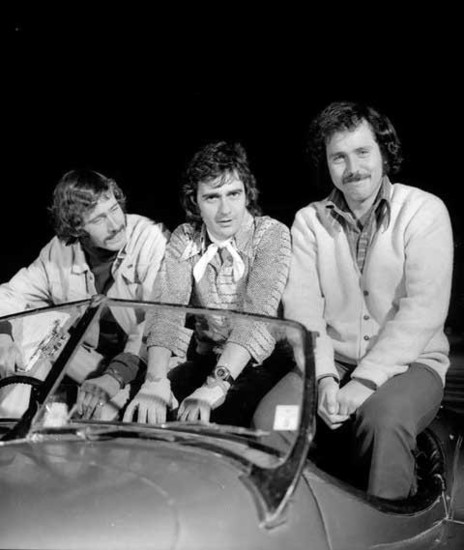
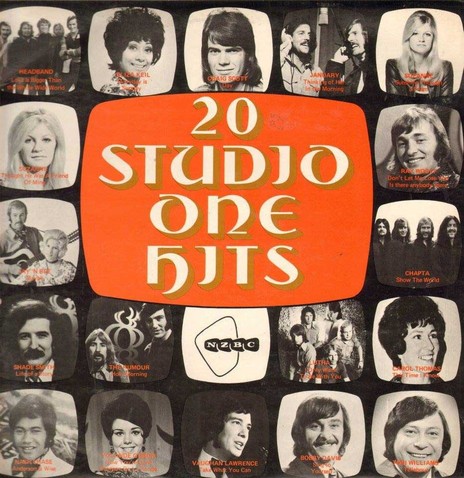
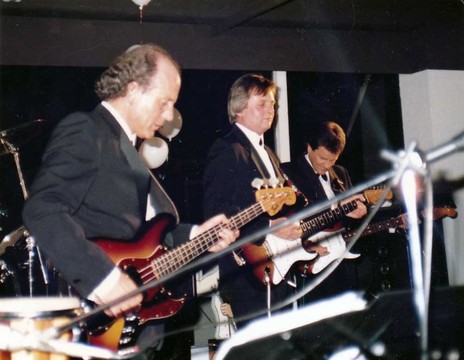
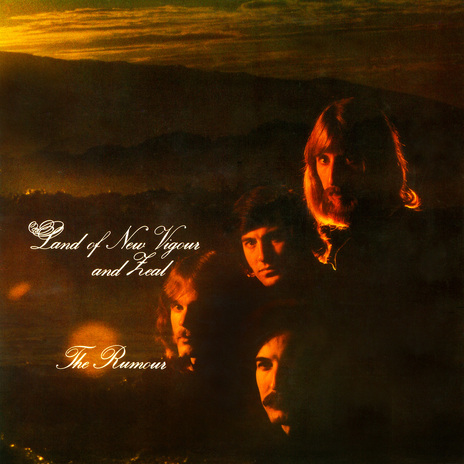
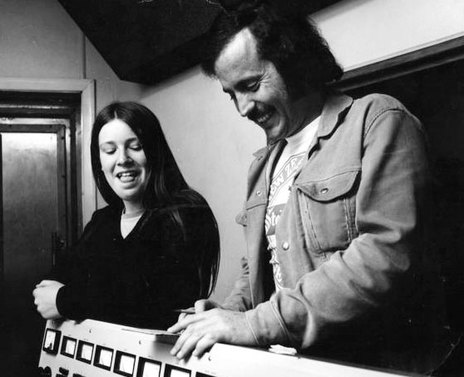
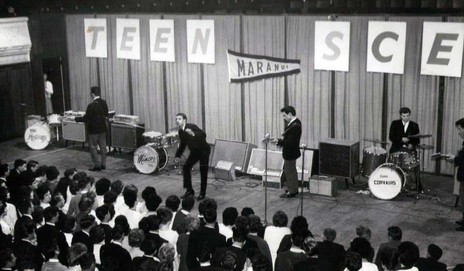
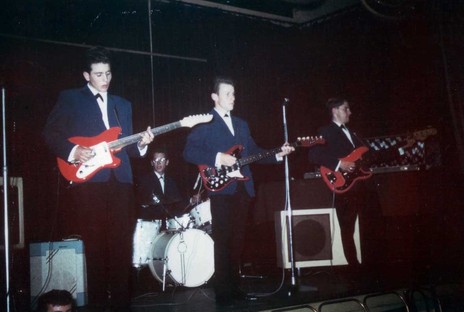
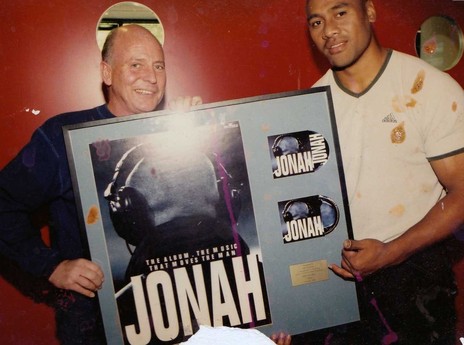
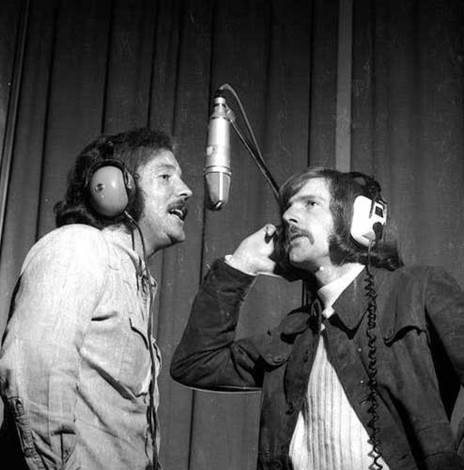
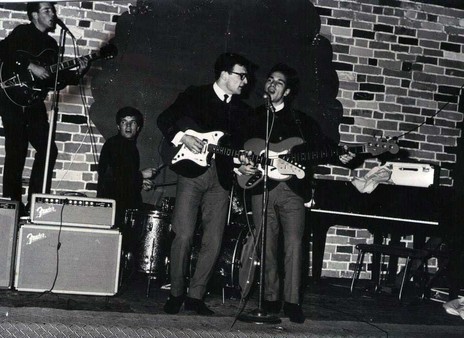
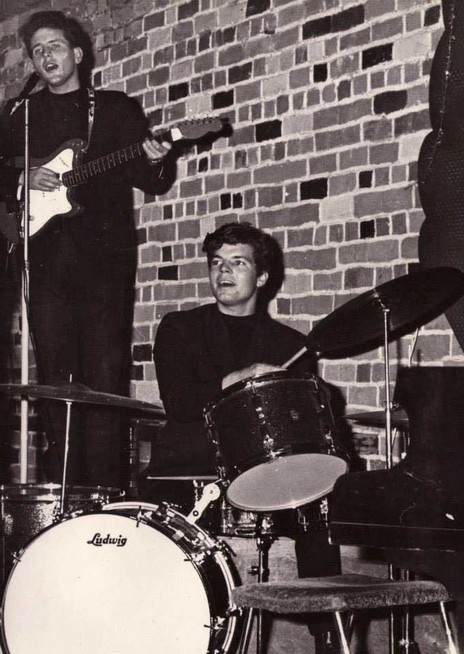
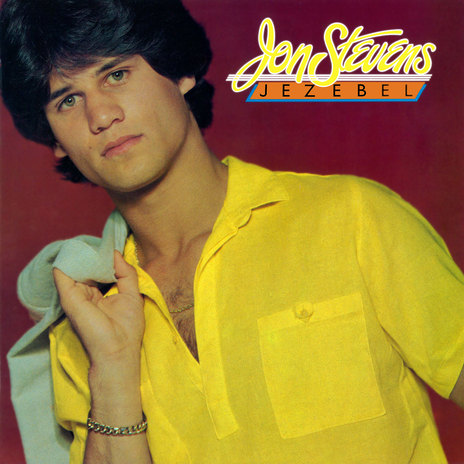
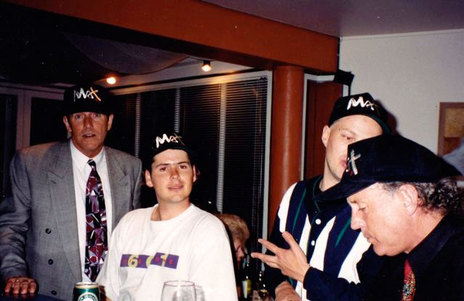
Visit our sister site
NZ On ScreenMade with funding from
NZ On Air